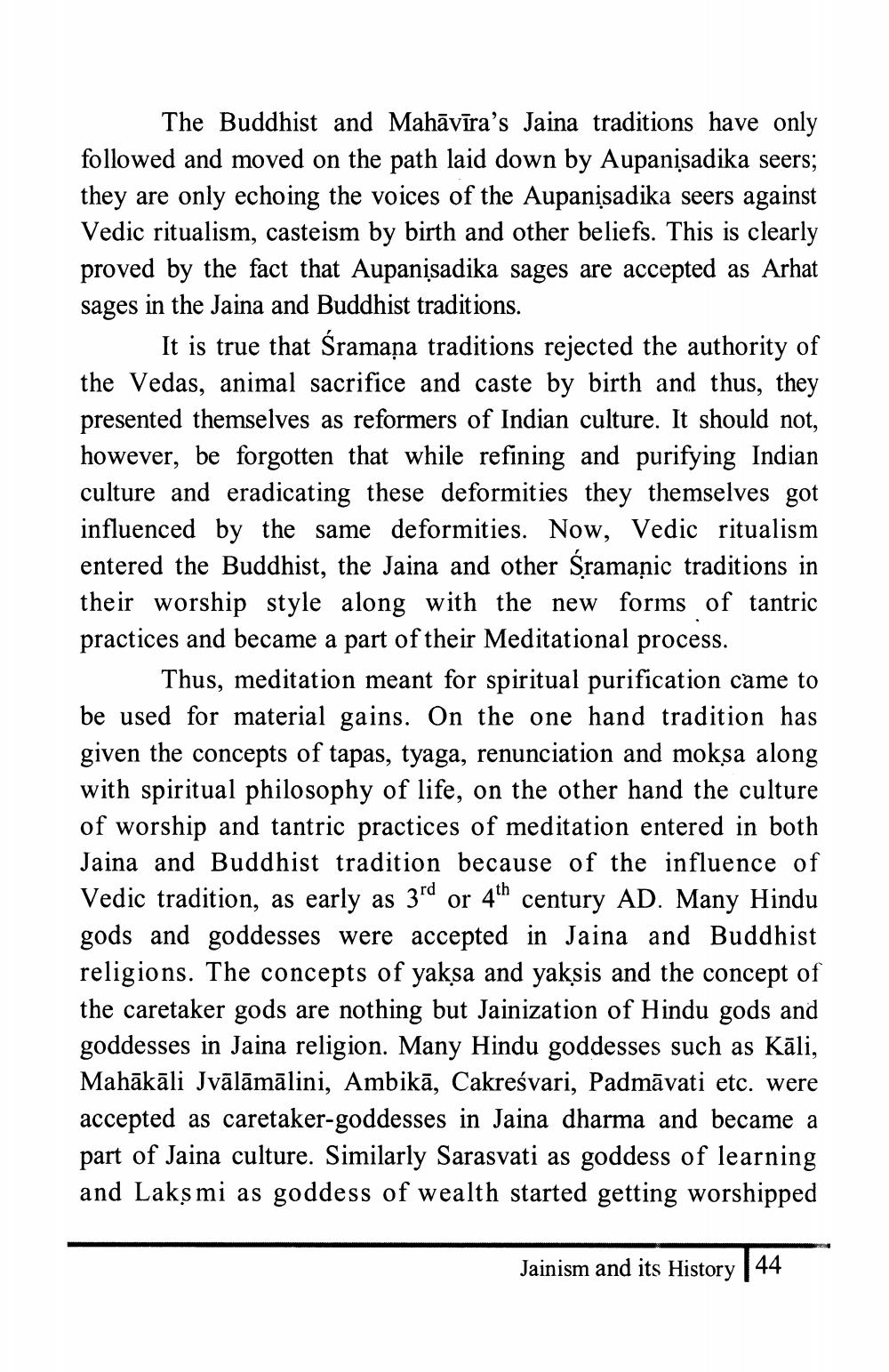________________
The Buddhist and Mahāvīra's Jaina traditions have only followed and moved on the path laid down by Aupanisadika seers; they are only echoing the voices of the Aupanisadika seers against Vedic ritualism, casteism by birth and other beliefs. This is clearly proved by the fact that Aupan sadika sages are accepted as Arhat sages in the Jaina and Buddhist traditions.
It is true that Šramana traditions rejected the authority of the Vedas, animal sacrifice and caste by birth and thus, they presented themselves as reformers of Indian culture. It should not, however, be forgotten that while refining and purifying Indian culture and eradicating these deformities they themselves got influenced by the same deformities. Now, Vedic ritualism entered the Buddhist, the Jaina and other Sramanic traditions in their worship style along with the new forms of tantric practices and became a part of their Meditational process.
Thus, meditation meant for spiritual purification came to be used for material gains. On the one hand tradition has given the concepts of tapas, tyaga, renunciation and moksa along with spiritual philosophy of life, on the other hand the culture of worship and tantric practices of meditation entered in both Jaina and Buddhist tradition because of the influence of Vedic tradition, as early as 3rd or 4th century AD. Many Hindu gods and goddesses were accepted in Jaina and Buddhist religions. The concepts of yaksa and yaksis and the concept of the caretaker gods are nothing but Jainization of Hindu gods and goddesses in Jaina religion. Many Hindu goddesses such as Kāli, Mahākāli Jvālāmālini, Ambikā, Cakreśvari, Padmāvati etc. were accepted as caretaker-goddesses in Jaina dharma and became a part of Jaina culture. Similarly Sarasvati as goddess of learning and Lakşmi as goddess of wealth started getting worshipped
Jainism and its History | 44




